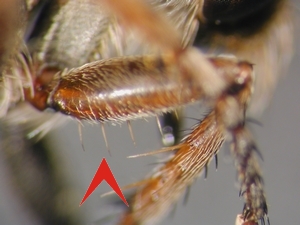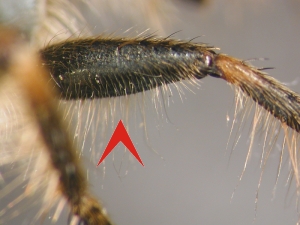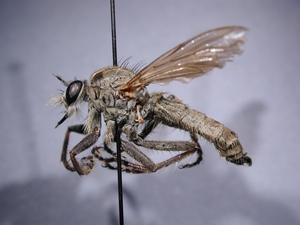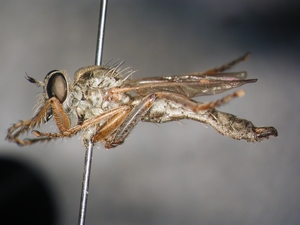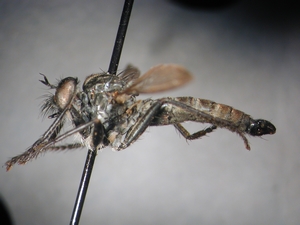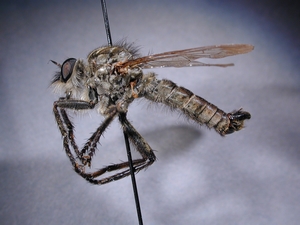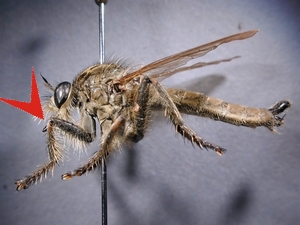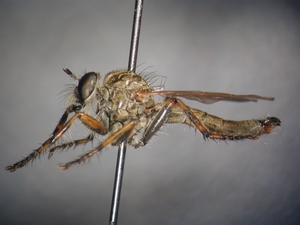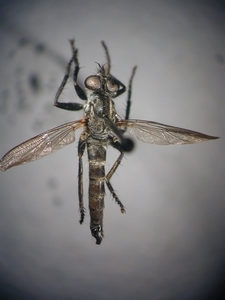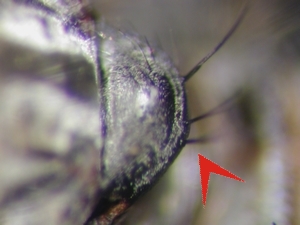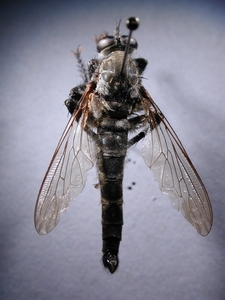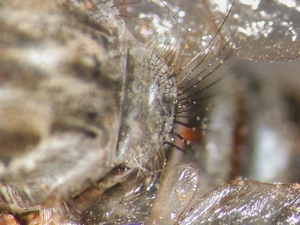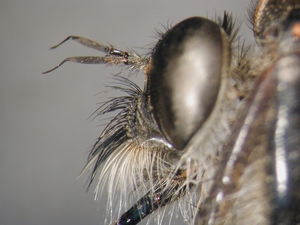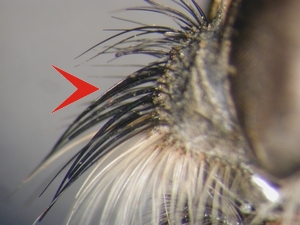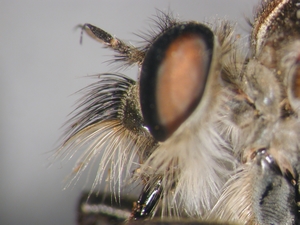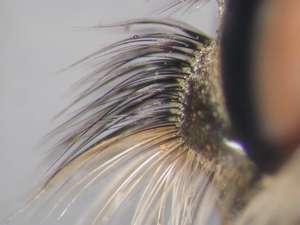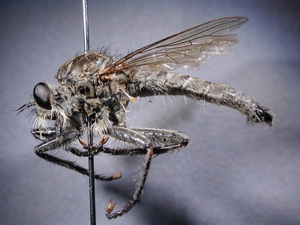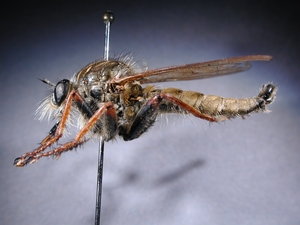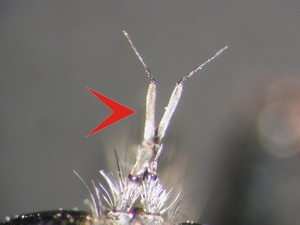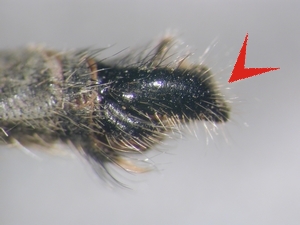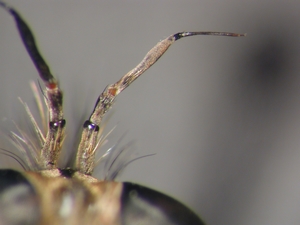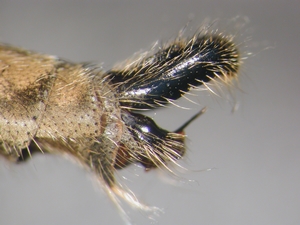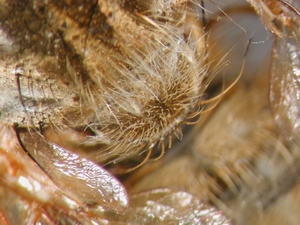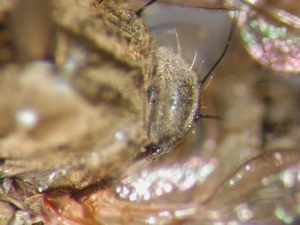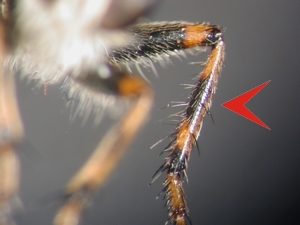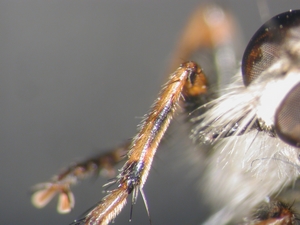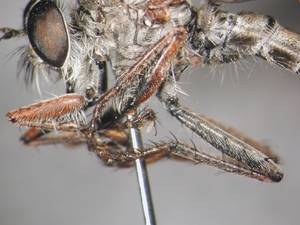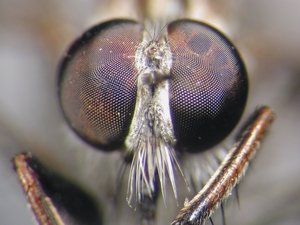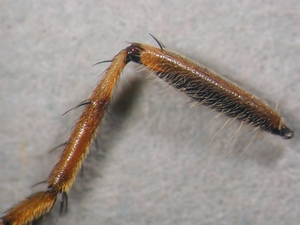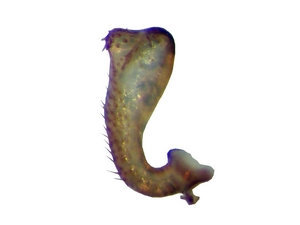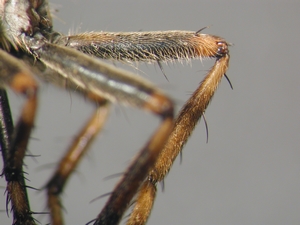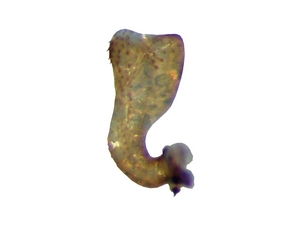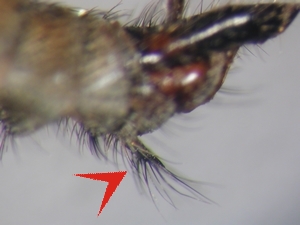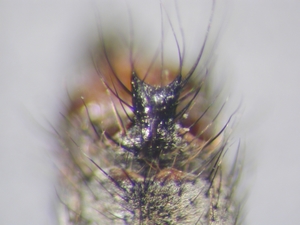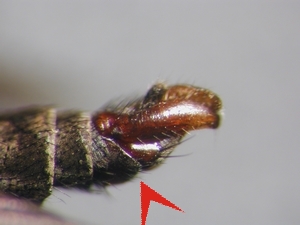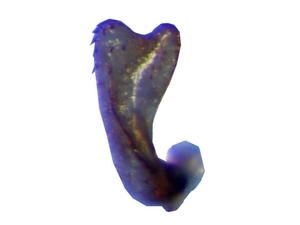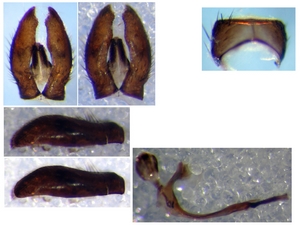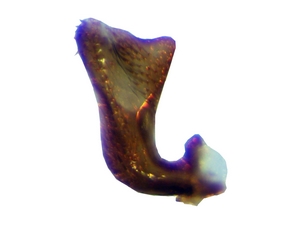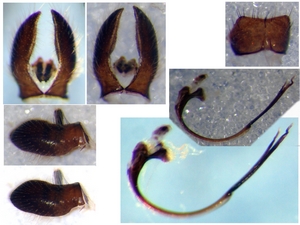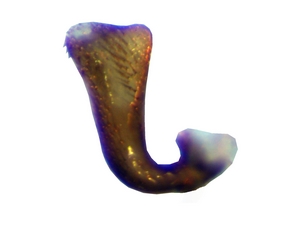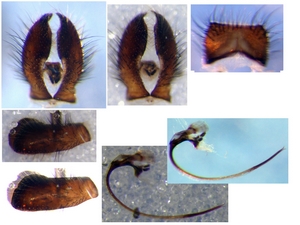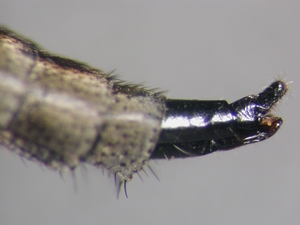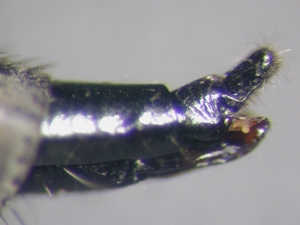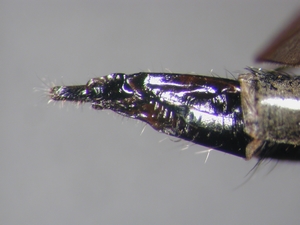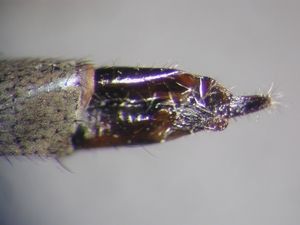g
Start g
- Robber flies of Germany -
[Key] Catalogue Comparisons Notes Terminology
key
- Subfamilies
- Asilinae
Machimus-group
- M. arthriticus
- M. chrysitis
- M. cyanopus
- M. gonatistes
- M. rusticus
- M. setibarbus
- N. setosulus
- T. atricapillus
- T. atripes
- T. cingulatus
- T. cowini
- T. micans
- T. pyragra
- T. strandi
contents & layout
& copyright:
Fritz Geller-Grimm
Imprint
Currently, there are 14 species of the Machimus-group known from Germany, which are placed in Tolmerus, Machimus, and Neoepitriptus. However, the placement of species is difficult and unsatisfactory due to the lack of well-corroborated generic diagnoses. LEHR (1996) tried to clarify the status of the genera of the Machimina-group, but without success. He has also synonymised Epitriptus with Tolmerus. It is probable that some additional species, especially in the poecilogaster-group, will eventually be found to occur in Germany. Single female specimens can often not be determined without knowledge of males.
The following tables for comparison of taxa are available:
| 1 a. |
Front femur with distinct stout bristles ventrally [Fig. 1]
. . . . . . . . . . . .
|
| 1 b. |
Front femur without distinct stout bristles ventrally and only with hairs [Fig. 2]
. . . . . . . . . . . .
|
| 2 a. |
Femora entirely black [Fig. 3]
. . . . . . . . . . . .
|
| 2 b. |
Femora yellow posteriorly [Fig. 4]
. . . . . . . . . . . .
|
| 3 a. |
Legs entirely black (sometimes `knees` paler) [Fig. 5], [Fig. 6]
. . . . . . . . . . . .
|
| 3 b. |
Legs at least in part red or yellow [Fig. 7], [Fig. 8]
. . . . . . . . . . . .
|
| 4 a. |
Species generally smaller than 18 mm [Fig. 9]; 2-4 scutellar marginal bristles [Fig. 10]
. . . . . . . . . . . .
|
| 4 b. |
Species generally larger than 18 mm [Fig. 11]; 4-8 scutellar marginal bristles [Fig. 12]
. . . . . . . . . . . . zu 5
|
| 5 a. |
Face beard (mystax) with distinctly stout bristles (especially ventrally) [Fig. 13], [Fig. 24]
. . . . . . . . . . . .
or Machimus intermedius Holmgren in Zetterstedt, 1852 |
| 5 b. |
Face beard (mystax) with only `normal` bristles [Fig. 15], [Fig. 16]
. . . . . . . . . . . .
|
| 6 a. |
Femora black, tibiae predominantly black and only red or yellow basally [Fig. 17], [Fig. 18]
. . . . . . . . . . . .
|
| 6 b. |
Femora in part red or yellowh [Fig. 19], [Fig. 20]
. . . . . . . . . . . .
|
| 7 a. |
Only black bristles on legs; scutum predominantly with black bristles; postpedicel nearly equal in length to first two antennal segments combined [Fig. 21]; eepandria apically slanted [Fig. 22]
. . . . . . . . . . . .
|
| 7 b. |
Black and yellow bristles on legs; scutum predominantly with yellow bristles; postpedicel longer than first two antennal segments combined [Fig. 23]; epandria narrow, rounded apically [Fig. 24]
. . . . . . . . . . . .
|
| 8 a. |
Species generally larger than 18 mm; 4-8 scutellar marginal bristles [Fig. 25], [Fig. 26]
. . . . . . . . . . . .
|
| 8 b. |
Species generally shorter than 18 mm; 2-4 scutellar marginal bristles [Fig. 27], [Fig. 28]
. . . . . . . . . . . .
|
| 9 a. |
Tibiae red, black apically and with a black ring medially [Fig. 29], [Fig. 30]
. . . . . . . . . . . .
|
| 9 b. |
Tibiae red, but without such a black ring medially [Fig. 31], [Fig. 32]
. . . . . . . . . . . .
|
| 10 a. |
Hind femora, in posterior view, red dorsally [Fig. 33] - female specimens cannot be assigned properly to species; gonostylus (dististylus) smaller and not strongly angled basally [Fig. 34] - cf. table for comparison!
. . . . . . . . . . . .
|
| 10 b. |
Hind femora, in posterior view, predominantly black dorsally, only base and tip red [Fig. 35] - this character is usually found in males, but does not work well for females, which are red dorsally; gonostylus (dististylus) broader and distinctly angled at base [Fig. 36]
. . . . . . . . . . . .
|
|
11 a. |
males (cf. table for comparison) . . . . . . . . . . . .
|
|
11 b. |
females (female specimens cannot be assigned to species without males, cf. table for comparison) . . . . . . . . . . . .
|
| 12 a. |
Last sternite with a long, bifid projection posteriorly [Fig. 37], [Fig. 38]
. . . . . . . . . . . .
|
| 12 b. |
Last sternite with a usual, more or less straight hind margin [Fig. 39]
. . . . . . . . . . . .
|
| 13 a. |
Gonostylus excavated apically [Fig. 40]; aedeagus short and straight towards tip [Fig. 41]
. . . . . . . . . . . .
|
| 13 b. |
Gonostylus only weakly excavated apically [Fig. 40]; aedeagus long and bent [Fig. 41]
. . . . . . . . . . . .
|
| 14 a. |
Gonostylus short and wide apically [Fig. 42]; aedeagal apodeme small [Fig. 43]
. . . . . . . . . . . .
|
| 14 b. |
Gonostylus long and narrower apically [Fig. 44]; aedeagal apodeme larger [Fig. 45]
. . . . . . . . . . . .
|
| 15 a. |
Ovipositor cylindrical in cross-section (not distinctly laterally compressed) [Fig. 46], [Fig. 47]
. . . . . . . . . . . .
|
| 15 b. |
Ovipositor laterally compressed [Fig. 48], [Fig. 49]
. . . . . . . . . . . .
|
| 16 a. |
[no assignment to species possible without males]
. . . . . . . . . . . .
. . . . . . . . . . . .
. . . . . . . . . . . .
|
